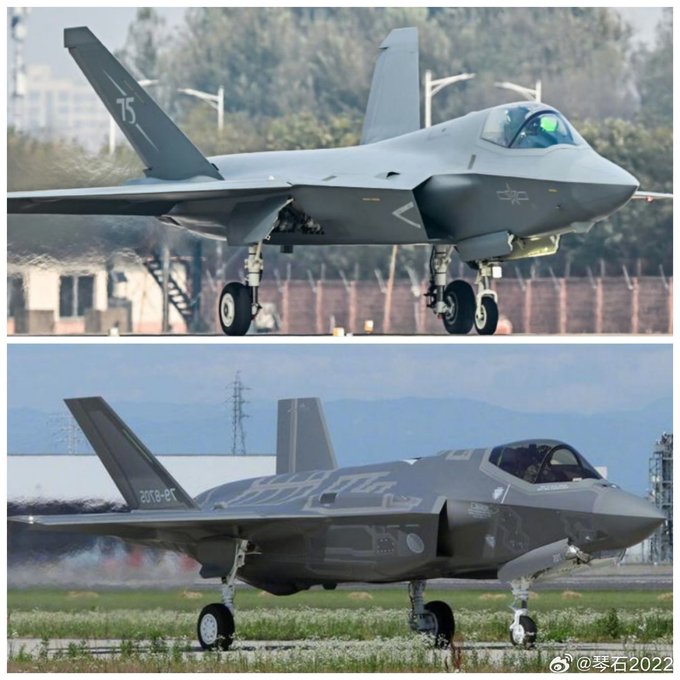Pakistan to Get Chinese-Made Shenyang J-35 Fifth-Gen Fighter Aircraft Within 24 Months
According to Pakistan's 24 News HD media outlet, this acquisition is part of Pakistan Air Force’s (PAF) efforts to enhance its capabilities and widen the gap between its air power and that of India.
(DEFENCE SECURITY ASIA) – Pakistan has reportedly approved the purchase of the Chinese-made fifth-generation fighter jet, the Shenyang J-35, with deliveries expected within 24 months.
According to Pakistan’s 24 News HD media outlet, this acquisition is part of Pakistan Air Force’s (PAF) efforts to enhance its capabilities and widen the gap between its air power and that of India.
The Shenyang J-35 is expected to outperform India’s advanced fighters, such as the Rafale and Sukhoi Su-30MKI.
This advantage is projected to remain until India secures its own fifth-generation fighter jets.
Earlier this year, the PAF hinted at its intent to acquire the Shenyang J-35/FC-31 “Gyrfalcon,” developed by China’s Shenyang Aircraft Corporation.
PAF Chief of Air Staff, Air Chief Marshal Zaheer Ahmed Baber Sidhu, stated that the Shenyang J-35/FC-31 would enter service “soon.”

Summary:
Pakistan has approved the acquisition of the Chinese-made fifth-generation fighter jet, the J-35, with deliveries expected within 24 months. This move aims to enhance the Pakistan Air Force’s (PAF) capabilities and widen its technological edge over India, which still relies on 4.5-generation fighters like the Rafale and Sukhoi Su-30MKI.
The J-35, developed by Shenyang Aircraft Corporation, is designed for air combat and air-to-ground operations. PAF pilots are already undergoing training in China to operate the aircraft, signaling its imminent inclusion in Pakistan’s fleet. The acquisition aligns with Pakistan’s broader strategy to modernize its air force, replacing aging F-16s and Mirage 5s with advanced fighters.
This deal also reflects China’s growing influence as a defense supplier, with the J-35 joining the J-10C and JF-17 in PAF’s inventory. Analysts view the J-35 as a significant boost to Pakistan’s air power and a key component of its future aerial strategy.
Negotiations for the procurement of the Shenyang J-35/FC-31 have reportedly been finalized, with PAF pilots already undergoing training in China to operate the aircraft.
The acquisition of the Shenyang J-35 has raised concerns in neighboring India, which still relies on 4.5-generation fighters like the Sukhoi Su-30MKI and Rafale.
The move underscores Pakistan’s commitment to advancing its aerial capabilities while highlighting China’s growing role as a defense supplier.
At the recent Airshow China 2024 in Zhuhai, China unveiled official images of its second fifth-generation stealth fighter, the Shenyang J-35A.
Designed for air combat and air-to-ground operations, the Shenyang J-35A reflects China’s ambition to compete with the United States in developing stealth fighters.

With the Shenyang J-35A, China joins the U.S. as the only nations to produce two distinct fifth-generation fighters, the Shenyang J-35A and J-20 “Mighty Dragon,” akin to the American F-35 and F-22 “Raptor.”
The inclusion of the Shenyang J-35 into PAF’s inventory complements earlier acquisitions of Chinese aircraft, including the J-10C and the jointly developed JF-17.
Analysts suggest the Shenyang J-35 will replace Pakistan’s aging F-16s and Mirage 5s, signaling a shift towards a more modern and diversified air force. – DSA



Comments are closed.